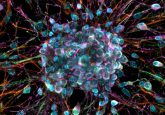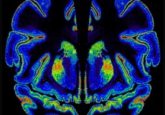Salty circuits

Craving something salty? Find out why.

Salt is a highly addictive taste, but not without reason. Humans need salt for basic physiological functions such as regulating blood pressure. However, too much of this good thing has its consequences: high blood pressure, heart attacks and strokes.
“There is kind of a sweet spot, just like with anything else,” said Jon Resch from Harvard Medical School. He recently published a paper in the journal Neuron that describes a uniquely activated neural circuit that stimulates sodium appetite in pursuit of sodium homeostasis [1].
Although the hormones angiotensin II (ATII) and aldosterone are produced in the periphery in response to sodium deficiency, neurons in the brainstem (NTSHSD2 neurons) actually sense these hormones and orchestrate the drive to consume salt. In an attempt to pharmacologically mimic sodium deficiency, Resch chronically administered aldosterone to mice before recording NTSHSD2 neuron activity in ex vivo brain slices.
“Early on in our experiments, we weren’t having much success stimulating sodium intake just by stimulating the aldosterone neurons in the NTS,” said Resch. However, while rummaging through older literature, he came across a study suggesting a synergistic effect between aldosterone and ATII [2], so he decided to activate the hormones simultaneously. When he introduced ATII into the mix, he observed a significant increase in sodium consumption in his mice.
Following sodium deprivation, NTSHSD2 neurons showed spontaneous pacemaker-like firing. “It’s interesting because most of our neurons don’t work like that,” said Resch. Normally, neurons require signals from other neurons to become active. However, when Resch cut off communication from other neurons, NTSHSD2 neurons still fired in response to sodium deficiency.
Finally, Resch wanted to explore the neural circuit by which NTSHSD2 neurons drive sodium consumption. To do this, he combined anterograde tracing and optogenetics-facilitated circuit mapping and identified the ventrolateral bed nucleus of the stria teminalis (vlBNST) as a key output site for NTSHSD2neurons. Optogenetically stimulating the terminals of NTSHSD2 neurons within the vlBNST induced sodium ingestion in the mice.
Although a major leap in understanding sodium consumption, this neural circuit is only part of the story. “We really want to decode what’s happening in the vlBNST,” said Resch.





